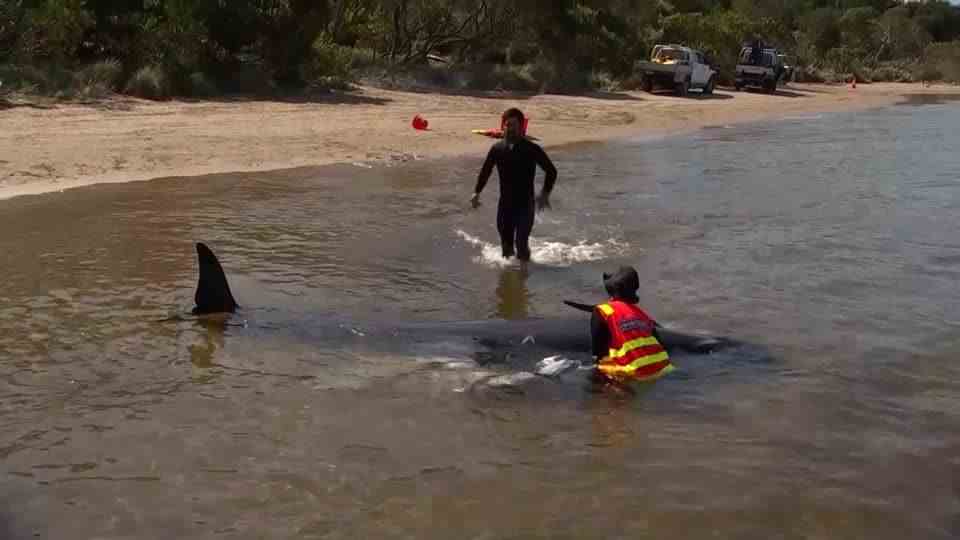Mass stranding off Tasmania
More than 200 dead whales are said to be dragged out to sea
Beached whales at Macquarie Harbor in Strahan, Tasmania. Why the giant marine mammals stray here and then die is completely unclear.
© Andrew Breen/Huon Aquaculture via AAP/DPA
Masses of dead whales: On a beach in Tasmania there is a scary picture. Animal rights activists are trying to save at least some of the marine mammals. The carcasses have to get off the beach now.
Whales have stranded and died in large numbers near Australia. Most of the approximately 200 whale carcasses are now to be taken out to sea. The pilot whales were stranded on a stretch of coast on the island of Tasmania, which lies south of the Australian continent. The process of decomposition of the giant marine mammals on land is too slow, the Australian broadcaster ABC quoted a spokesman for the authorities as saying on Friday.
Exactly two years ago, when hundreds of whales were stranded in the same bay on the west coast, the emergency services had left most of the dead animals on the beach. At the time, authorities had hoped for natural decomposition, “but that hasn’t happened in a satisfactory time frame,” said Brendon Clark of the Tasmania Parks and Wildlife Service. The result: A terrible stench emanated from Ocean Beach at the time.
Most of the stranded whales have died – despite rescue attempts
About 230 pilot whales (also known as pilot whales) were stranded in remote Macquarie Bay on Wednesday. According to eyewitnesses, half of them were still alive. On Thursday morning, this was only true for a few dozen of the animals. The helpers managed to bring 32 of the peaceful giants – some of which weigh two and a half tons – into deep water with heavy equipment and boats. More than 200 dead marine mammals remain on the beach, which are now to be taken into the ocean.
The mass stranding of whales caused a worldwide sensation. Aerial photos showed dozens of shiny black marine mammals lying along the beach at the waterline. Most recently, it was said that only about ten of the stranded marine mammals were still alive.
Three of the pilot whales have not yet reached wildlife experts because of their remote location on shore and difficult tidal conditions, Clark said Friday. The rescue of all animals that have been stranded again and again is now a priority, after which the animal carcasses have to be removed, he explained.
The dead whales are also dragged far out to sea because the carcasses in shallow water or on the beach could attract sharks and transmit diseases.
In order to prevent the dead animals from being washed up again later on the shore, they should be brought to the edge of the continental shelf, which forms the transition to the deep sea. This is about 40 kilometers from the coast. The animals were pulled into the ocean with lines attached to boats, it said.
Why whales are stranded en masse is completely unclear
Two of the whales initially rescued have now also died after ten animals returned to shore – a typical characteristic of pilot whales that makes rescuing stranded animals a great challenge. The marine mammals form extremely close bonds with each other within their group. After mass strandings, surviving specimens often attempt to swim back to their friends and family.
On Monday, 14 male sperm whales died on a remote beach on Tasmania’s King Island.
In 2020, 470 whales were stranded off the coast of Tasmania. More than 300 pilot whales died at the time – despite the efforts of dozens of volunteers to save the animals. The reason for these mass strandings is still unclear.

Watch the video: About 230 pilot whales were stranded on the west coast of the Australian state of Tasmania on Wednesday.

